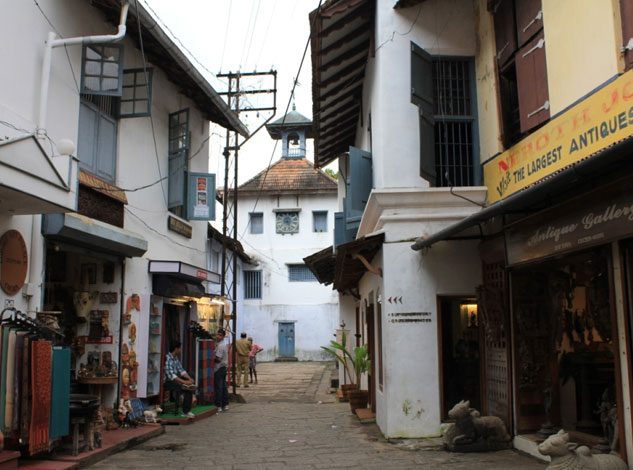
01 - Jew Town
Historic Jew Town, the heart of the once-thriving Cochin Jewish community, is known for its old-world charm and 16th-century Paradesi Synagogue. Quaint shops around Synagogue Lane and Jew Town Road sell antiques, carvings, and vintage collectibles, along with Keralan crafts and aromatic spices. Laid-back outdoor cafes and artsy eateries, some in heritage buildings, serve local specialties and Western fare.
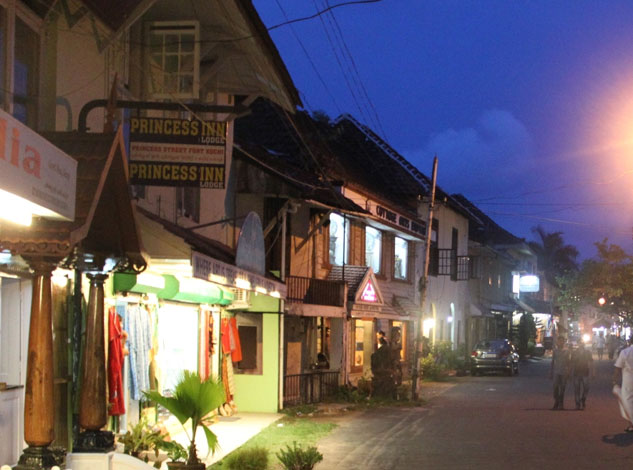
02 - Princess Street
Loafer's Corner, also known as Princess street is one of the earliest streets to be constructed in Fort Kochi, Ernakulam. Princess Street with its European style residences still retains its old world charm. The best view of this quaint street can be had from Loafer's Corner, the traditional meeting place and hangout of the jovial fun-loving people of the area.
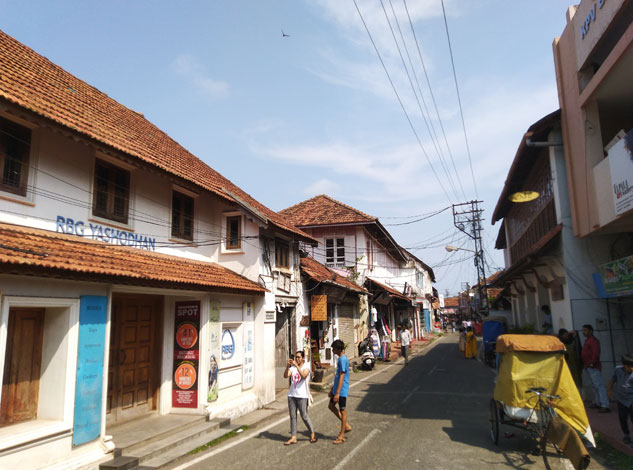
03 - Mattancherry
Mattancherry is a locality in the city of Kochi, India. It is said that the name Mattancherry comes from "Ancherry Mattom", a ''Namboodiri illam'' which the foreign traders then pronounced it as Matt-Ancherry, gradually becoming Mattancherry. Mattancherry is home to the Paradesi Synagogue, India's oldest functioning synagogue, Mattancherry Palace Museum, Mattancherry Pazhayannur Royal temple, Our Lady Of Life Church Mattancherry and Holy Cross Pilgrim Centre Mattancherry
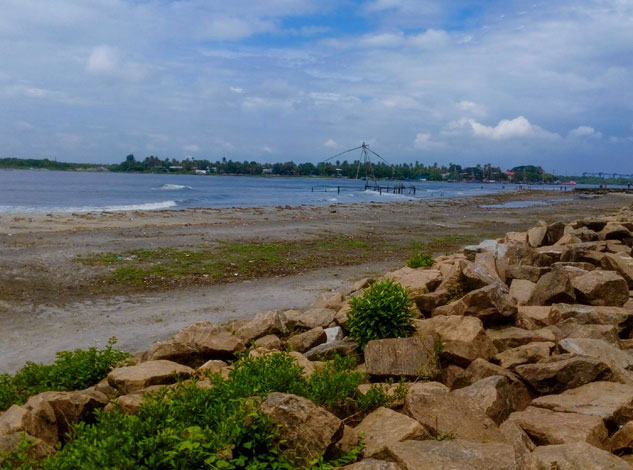
04 - Fort Kochi Beach
Fort Kochi beach is a beach along the Arabian Sea situated in Fort Kochi in the city of Kochi in South India, Kerala state. Unique views and point of interests are the so-called Chinese fishing nets (Cheena vala) and the fishermen working there. Other points of interests include the jetty towards the Vembanad Lake respectively to the Kerala backwaters. Colonial-style bungalows can be seen along the shoreline, as well as the Vasco da Gama square, the remains of Fort Emmanuel along the granite walkway, and many stalls, which make traditional cuisines using freshly caught fish.
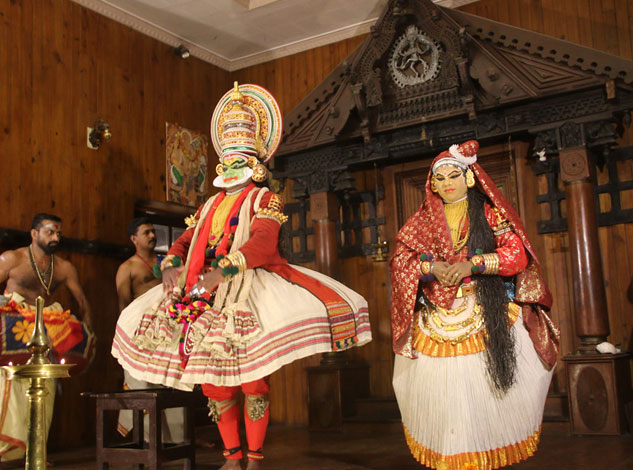
05 - Kerala Kathakali Centre
Kerala Kathakali Centre was founded in 1990. It is a performance and training centre, that showcase the traditional art forms of Kathakali, Kalaripayattu, and Carnatic classical music. The centre aims to popularise the performance arts of Kerala with the current generation, spot new talent and encourage training in the arts of Kerala.
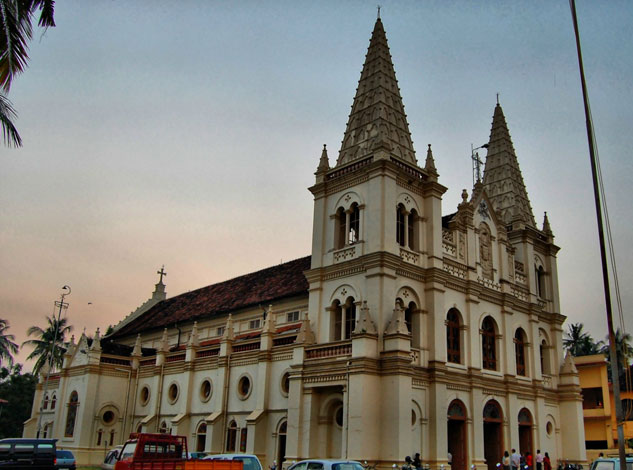
06 - Santa Cruz Cathedral Basilica
The Santa Cruz Cathedral Basilica (also known as Kotta Palli) at Fort Kochi, Kochi, is one of the nine basilicas in Kerala. Counted as one of the heritage edifices of Kerala, this church is one of the finest and most impressive churches in India and is visited by tourists the whole year round. It is a place of devotion as well as a center of historic significance, endowed with architectural and artistic grandeur and colours of the gothic style.
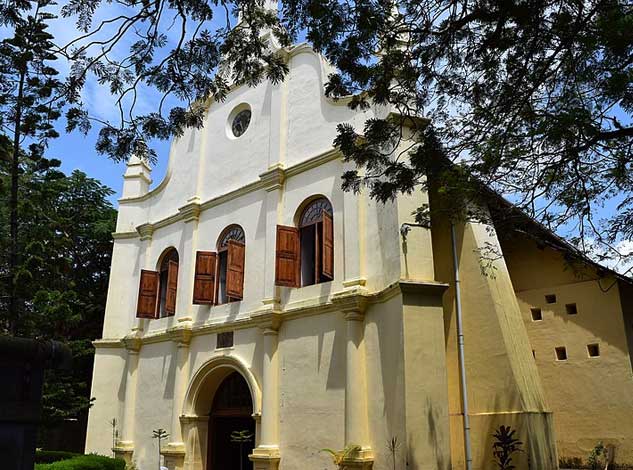
07 - Saint Francis Church
Saint Francis Church, in Fort Kochi (Fort Cochin), Kochi, originally built in 1503, is one of the oldest European churches in India and has great historical significance as a mute witness to the European colonial struggle in the subcontinent. The Portuguese explorer Vasco da Gama died in Kochi in 1524 when he was on his third visit to India. His body was originally buried in this church, but after fourteen years his remains were moved to Lisbon and are now located at Jerónimos Monastery.
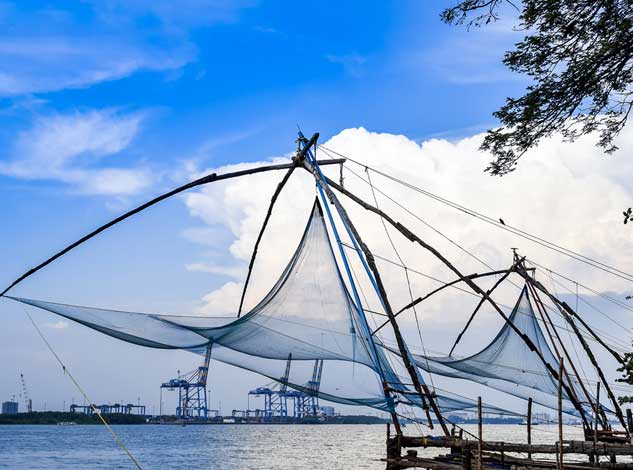
08 - Chinese Fishing Nets
Chinese fishing nets (Cheena vala in India) are a type of stationary lift net in India and Indonesia. They are fishing nets that are fixed land installations for fishing. While commonly known as "Chinese fishing nets" in India, the more formal name for such nets is "shore-operated lift nets". In India, they are mostly found in the Indian cities of Kochi and Kollam, where they have become tourist attractions. The system is sufficiently balanced that the weight of a man walking along the main beam is sufficient to cause the net to descend into the sea. The net is left for a short time, possibly just a few minutes, before it is raised by pulling on ropes.
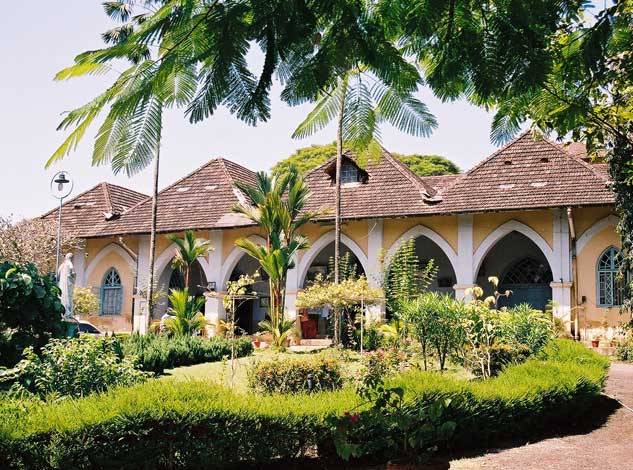
09 - Indo-Portuguese Museum
The Indo-Portuguese Museum in Fort Kochi was established by the efforts of the late Dr. Joseph Kureethra, Bishop of Kochi, in a bid to protect and showcase the rich cultural heritage and Portuguese influence. The museum has five main sections: Altar, Treasure, Procession, Civil Life, and Cathedral. Among the pieces on display is a piece of the altar made in teak (16th century) from the Church of Our Lady of Hope, Vypeen; a chasuble (19th century) from Bishop's House, Fort Kochi; a processional cross, which is a combination of silver and wood (17th century) from Santa Cruz Cathedral, Fort Kochi; and an Indo-Portuguese monstrance (18–19th century) from the Church of Our Lady of Hope.
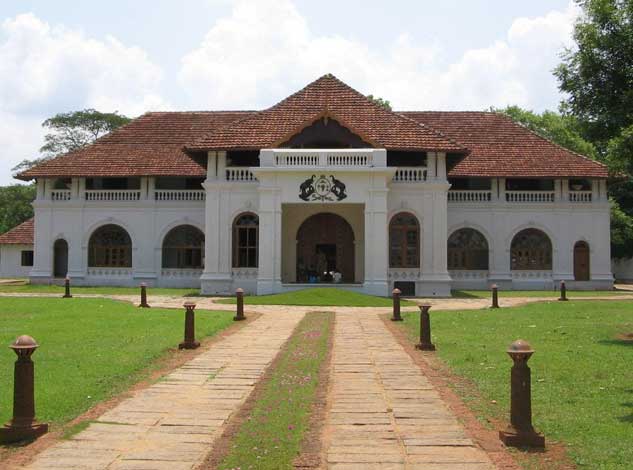
10 - Dutch Palace (Mattancherry)
Mattancherry Palace is a Portuguese palace popularly known as the Dutch Palace, which features Kerala murals depicting portraits and exhibits of the Rajas of Kochi. The palace was included in the "tentative list" of UNESCO World Heritage Sites. The palace is a quadrangular structure built in Nālukettu style, the traditional Kerala style of architecture, with a courtyard in the middle. Certain elements of architecture, as for example the nature of its arches and the proportion of its chambers are indicative of European influence in basic Nālukettu style.
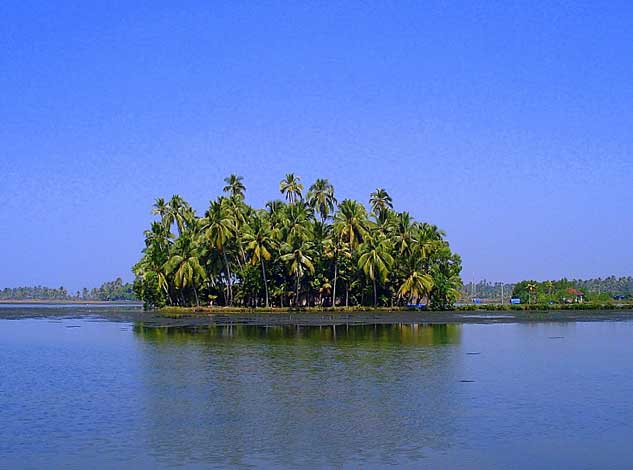
11 - Kumbalangi
Kumbalangi is an island village on the outskirts of Kochi city in the state of Kerala, India. Situated amidst backwaters, around 12 km (7.5 mi) from the city center, Kumbalangi is a major tourist attraction and is famous for its Chinese fishing nets. It is the first eco-tourism village in India, according to the government agency Kerala Tourism.The main occupation in Kumbalangy is fishing, and there are over 100 Chinese nets in the backwaters that face the village. Groves of mangroves separate the land from the water, providing a breeding ground for prawns, crabs, oysters, and small fishes.
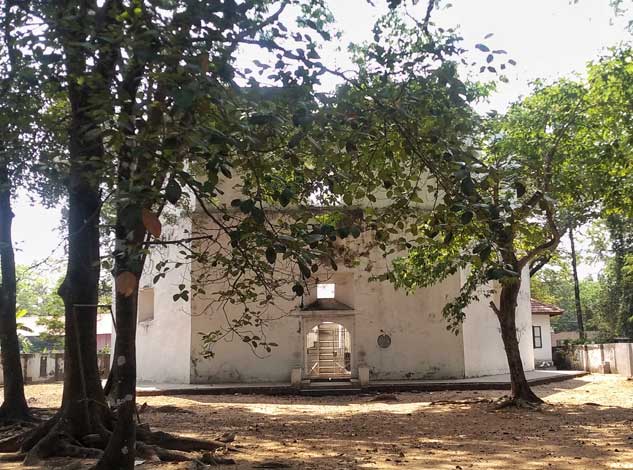
12 - Pallipuram Fort
Pallippuram Fort or (Paleport Castelo em Cima) is a fort in Pallippuram, Vyppin, Ernakulam district of Kerala, south India. It was built by Portuguese sailors on 27 September, 1503 using just timber wood, and later renovated in 1505 by replacing timber structure with stone. It is the oldest existing European fort in India. The Dutch captured the fort in 1663 and sold it to the Kingdom of Travancore in 1789. The fort is situated in the northern extremity of Vypeen island and is hexagonal in shape, a form popularly known as ayikkotta or alikotta.